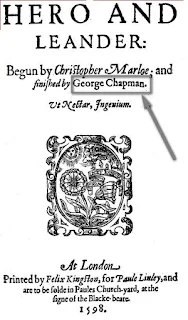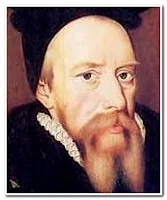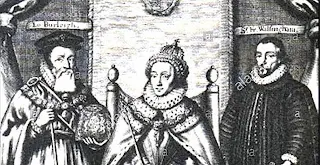Clearly a mask ! But who is behind it ?
---------------------
|
| The preparation of the First Folio took almost 8 years (1616-Dec1623). One can be sure that greatest care has been taken to a perfect illustration of the portrait of the poetic genius and dramatist Shakespeare. Nothing was left to chance:
The shadowed double line (s.red arrows!) at the left chin of Droeshouts famous copper engraving in the First Folio (FF 1623 was by no means accidental but had a definite meaning: it clearly characterizes the border of a mask. (Even the "inverted satirical" second illustration (1640) of Shakespeare's copper engraving in (s.white arrows! of ->Shakespeare's sonetts, restructured) exhibits a double line at the right chin. -
Click here →: Original First Folio "Portrait"
The absolute inability or unwillingness of (academic) Shakespeare experts to develop a reasonably plausible working hypothesis (of the meaning and explanation of the double chin line),
i.e. why there is a mask und who is behind it,
is telling .... If the man from Stratford would have been the poet genius, all this shady monkey business would not have been necessary. -
And also Ben Jonsons adjecent "rude" commentary ("reader looke, not on his picture, but his booke") would not have been necessary.
How can Stratfordians experts ever expect, that a growing collective intelligence world-wide is letting itself fobbed off with such a farcy monkey bussiness.
The true poet genius (concealed Christopher Marlowe alias SHAKESPEARE), in 1616 was alive and orchestrated not only the arrangements for the First Folio but all significant late textual corrections, enlargements, changes and amendments of the First Fo(between 1616 and 1623) which otherwise cannot be explained.-
Perhaps there are better theories around , I haven't seen them yet., however.- |













